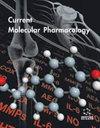Sanguinarine Attenuates Lung Cancer Progression via Oxidative Stress-induced Cell Apoptosis
IF 2.9
4区 生物学
Q3 BIOCHEMISTRY & MOLECULAR BIOLOGY
引用次数: 0
Abstract
Background:: Lung cancer (LC) incidence is rising globally and is reflected as a leading cause of cancer-associated deaths. Lung cancer leads to multistage carcinogenesis with gradually increasing genetic and epigenetic changes. Aims:: Sanguinarine (sang) mediated the anticancer effect in LCC lines by involving the stimulation of reactive oxygen species (ROS), impeding Bcl2, and enhancing Bax and other apoptosis-associated protein Caspase-3, -9, and -PARP, subsequently inhibiting the LC invasion and migration. Objective:: This study was conducted to investigate the apoptotic rate and mechanism of Sang in human LC cells (LCC) H522 and H1299. Methods:: MTT assay to determine the IC50, cell morphology, and colony formation assay were carried out to show the sanguinarine effect on the LC cell line. Moreover, scratch assay and transwell assay were performed to check the migration. Western blotting and qPCR were done to show its effects on targeted proteins and genes. ELISA was performed to show the VEGF effect after Sanguinarine treatment. Immunofluorescence was done to check the interlocution of the targeted protein. Results:: Sang significantly inhibited the growth of LCC lines in both time- and dose-dependent fashions. Flow cytometry examination and Annexin-V labeling determined that Sang increased the apoptotic cell percentage. H522 and H1299 LCC lines treated with Sang showed distinctive characteristics of apoptosis, including morphological changes and DNA fragmentation. Conclusion:: Sang exhibited anticancer potential in LCC lines and could induce apoptosis and impede the invasion and migration of LCC, emerging as a promising anticancer natural agent in lung cancer management.山金车花碱通过氧化应激诱导的细胞凋亡减缓肺癌进展
背景::肺癌(LC)发病率在全球范围内不断上升,已成为癌症相关死亡的主要原因。肺癌会导致多阶段的癌变,遗传和表观遗传变化会逐渐增加。研究目的桑吉纳林(Sang)通过刺激活性氧(ROS)、阻碍Bcl2、增强Bax和其他凋亡相关蛋白Caspase-3、-9和-PARP来介导LCC株的抗癌作用,进而抑制LCC的侵袭和迁移。研究目的本研究旨在探讨人 LC 细胞(LCC)H522 和 H1299 的凋亡率和 Sang 的作用机制。方法通过 MTT 试验测定 IC50、细胞形态学和集落形成试验来显示桑吉纳林对 LC 细胞株的影响。此外,还进行了划痕试验和透孔试验以检测迁移情况。还进行了 Western 印迹和 qPCR 分析,以显示其对目标蛋白和基因的影响。酶联免疫吸附试验(ELISA)显示了三基萘林处理后对血管内皮生长因子(VEGF)的影响。免疫荧光检查目标蛋白的互锁情况。结果Sang 能明显抑制 LCC 株系的生长,且具有时间和剂量依赖性。流式细胞术检查和Annexin-V标记确定桑增加了凋亡细胞的百分比。用 Sang 处理的 H522 和 H1299 LCC 株表现出明显的细胞凋亡特征,包括形态变化和 DNA 断裂。结论Sang 对 LCC 株具有抗癌潜力,可诱导细胞凋亡,阻碍 LCC 的侵袭和迁移,是一种在肺癌治疗中很有前景的抗癌天然药物。
本文章由计算机程序翻译,如有差异,请以英文原文为准。
求助全文
约1分钟内获得全文
求助全文
来源期刊

Current molecular pharmacology
Pharmacology, Toxicology and Pharmaceutics-Drug Discovery
CiteScore
4.90
自引率
3.70%
发文量
112
期刊介绍:
Current Molecular Pharmacology aims to publish the latest developments in cellular and molecular pharmacology with a major emphasis on the mechanism of action of novel drugs under development, innovative pharmacological technologies, cell signaling, transduction pathway analysis, genomics, proteomics, and metabonomics applications to drug action. An additional focus will be the way in which normal biological function is illuminated by knowledge of the action of drugs at the cellular and molecular level. The journal publishes full-length/mini reviews, original research articles and thematic issues on molecular pharmacology.
Current Molecular Pharmacology is an essential journal for every scientist who is involved in drug design and discovery, target identification, target validation, preclinical and clinical development of drugs therapeutically useful in human disease.
 求助内容:
求助内容: 应助结果提醒方式:
应助结果提醒方式:


